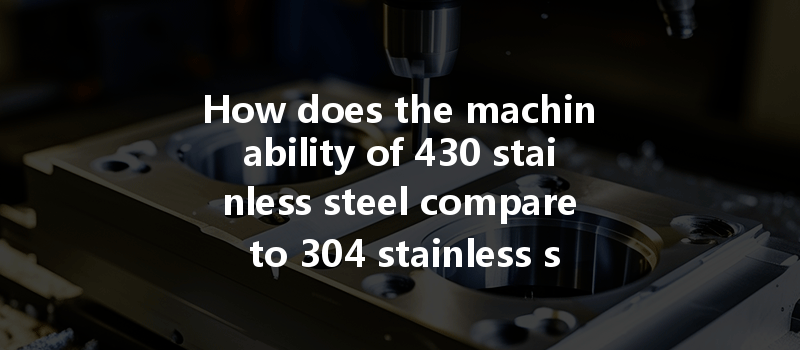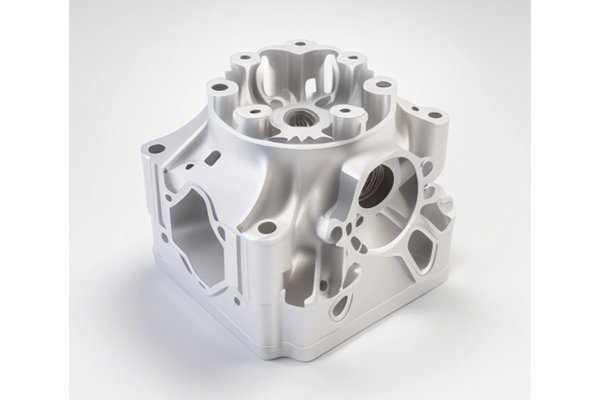Did you know that stainless steel is one of the most commonly used materials in manufacturing, accounting for nearly 70% of worldwide alloy production? With its resistance to corrosion, sturdy structure, and aesthetic appeal, stainless steel finds its way into countless applications, from household appliances to aerospace engineering. Among the different grades of stainless steel, 430 and 304 are two of the most widely utilized variants, especially in CNC (Computer Numerical Control) machining processes.
In this comprehensive blog post, we will explore the machinability of 430 stainless steel compared to 304 stainless steel. By the end of this article, you will have a deeper understanding of their properties, applications, and the optimal conditions for machining each type. Let’s dive in!
What is Machinability?
Before we compare the machinability of 430 and 304 stainless steels, it’s crucial to define machinability. Machinability refers to how easily a material can be cut, shaped, or otherwise machined. Various factors affect machinability, such as cutting speed, tool wear, surface finish, and the physical and chemical properties of the material itself.
A higher machinability rating implies less wear on the tools, better surface quality, and shorter machining times, leading to improved efficiency and reduced costs.
Overview of 304 and 430 Stainless Steel
304 Stainless Steel
304 stainless steel, often referred to as “18/8” stainless steel due to its composition of approximately 18% chromium and 8% nickel, is an austenitic stainless steel known for its excellent corrosion resistance and high ductility. This alloy is widely used for various applications, including:
Key Properties:
430 Stainless Steel
430 stainless steel is a ferritic stainless steel primarily composed of around 16-18% chromium and is low in nickel, which gives it a good balance of properties while keeping costs low. Its applications include:
Key Properties:
Comparing Machinability of 304 vs. 430 Stainless Steel
One of the primary factors to consider in the machinability of any material is the cutting speed. Generally, the cutting speed for 304 stainless steel is relatively lower than for 430 due to its work hardening properties.
304 Stainless Steel: When machining 304, operators should use a slower cutting speed, especially in heavy cuts. The work hardening effect can induce more wear and tear on the cutting tools, necessitating frequent tool changes.
430 Stainless Steel: 430, however, has better machinability due to its lower work hardening, allowing for higher cutting speeds without extreme tool wear. This can lead to shorter cycle times and reduced costs.

When machining stainless steels, achieving a high-quality surface finish is essential in many applications. A smoother finish often correlates with better performance, particularly in corrosion resistance.
304 Stainless Steel: It usually yields a finer surface finish when properly machined, although the work hardening can lead to potential rough spots if not handled correctly.
430 Stainless Steel: In contrast, 430 may provide a rougher surface finish, primarily due to its ferritic nature. It is essential to use the appropriate tooling and parameters to get an acceptable finish.
The choice of tool material, geometry, and coatings significantly influences the machining process.
The type of chips generated during the machining process can offer insight into the machinability of materials.
304 Stainless Steel: It tends to produce long, stringy chips due to the work hardening characteristics, which could pose issues in chip removal and lead to tool engagement problems.
430 Stainless Steel: This material typically generates shorter, more manageable chips, making it easier to handle during machining.
Considering costs is vital in any production environment.
Best Practices for Machining 304 and 430 Stainless Steel
Machining 304 Stainless Steel
Machining 430 Stainless Steel
In summary, understanding the machinability of 430 and 304 stainless steel is pivotal for manufacturers aiming to enhance their CNC machining efficiency. While both materials have their unique advantages and challenges, 430 stainless steel often presents a better machinability profile due to lower work hardening characteristics, allowing for faster cutting speeds and reduced tool wear.
As the industry continues to evolve, being informed about these distinctions will guide manufacturers in selecting the right materials and processes for their applications. Our exploration not only highlights key considerations and best practices but also underscores the importance of material choice in machining environments.
Whether you are involved in production planning, tooling selection, or operational oversight, understanding the differences in machinability can lead to significant cost reductions and improved product quality. Always think critically about which stainless steel grade is best suited for your needs.
The world of CNC machining is complex, but by being informed and proactive, you can navigate it effectively. Thank you for taking the time to deepen your knowledge on this essential topic!
—






